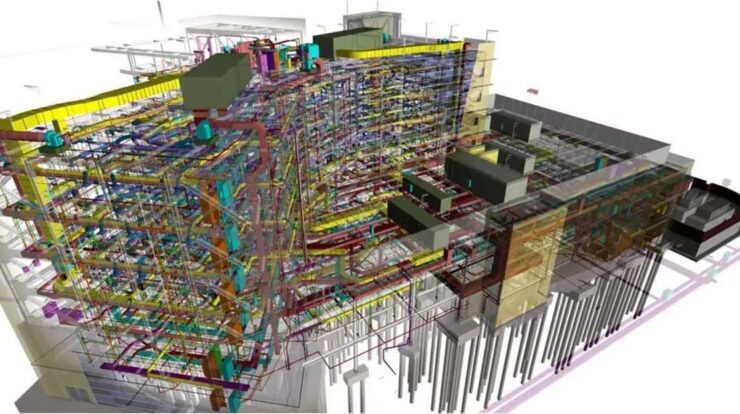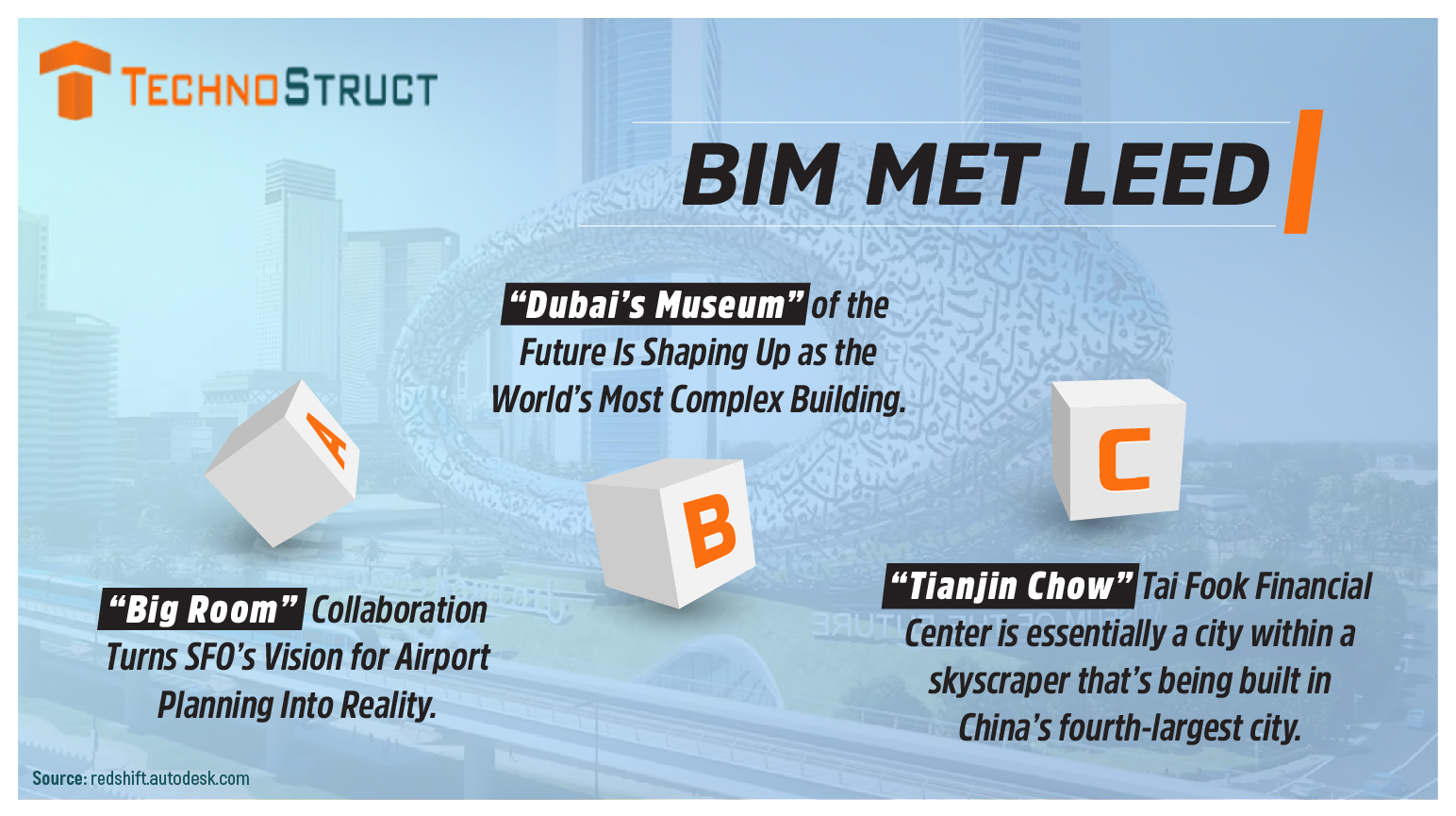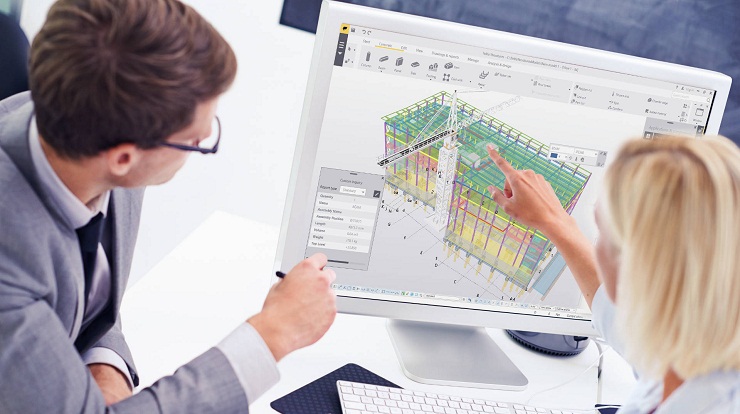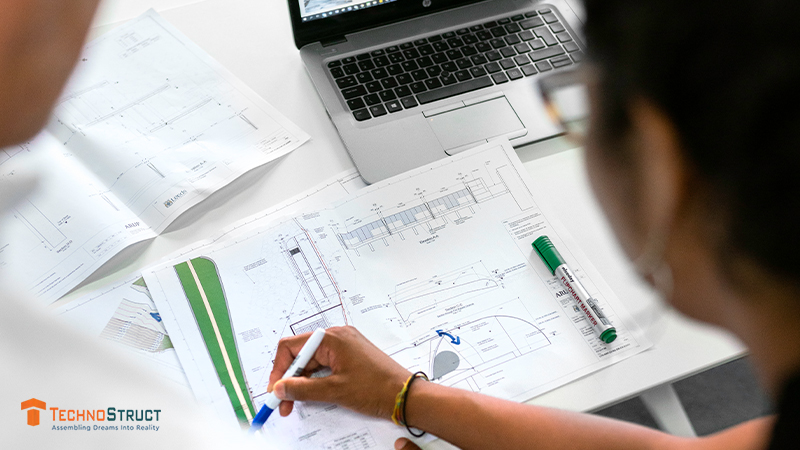
The construction industry has been known for its traditional methods and labor-intensive processes for decades. Despite its slow adoption, the industry is definitely undergoing a remarkable transformation. Technological advancements are reshaping and revolutionizing the Architecture, Engineering, and Construction Sector. In this article, we delve into the impact of technology and what it means for the future of the construction industry.
Building Information Modeling (BIM)
Building Information Modeling is no longer the future but the present. It enhances the way we design, construct, and manage a building. By creating a digital representation of a building or infrastructure project, BIM enables seamless collaboration in real-time. This digital model serves as a centralized hub where BIM Architects, engineers, contractors and other stakeholders can work together, optimizing their individual workflows and enhancing overall productivity.
BIM eliminates redundancy and errors by providing accurate and up-to-date information. A significant advantage of BIM is its data centric approach that lets the facility managers maintain and operate a building throughout its lifecycle. The benefits of BIM extend beyond collaboration and data management.
Real-time data, advanced simulations and analyses through BIM softwares are optimizing building designs through informed decision-making and thereby improving energy efficiency and sustainability. BIM is not just a trend and is being adopted and made mandatory across many countries, including India, for projects of all scales.
Streamlined Project Management
One of the key areas where technology is making a significant impact is project management. Advanced project management softwares facilitates stakeholders in streamlining processes, monitoring progress and managing resources effectively. From project planning and scheduling to budgeting and procurement, these tools provide real-time insights, foster collaboration and ensure project delivery within the stipulated time frame.
Smart and Sustainable Buildings and Construction Practices
Technology is a driving force behind the adoption of sustainability in the AEC space. Advanced tools allow the simulations of buildings using real-time data to make informed decisions, optimize building design and detect potential issues before they escalate. The Internet of Things (IoT) enables the integration of sensors and devices to gather real-time data on multiple aspects like energy consumption, and to monitor people and equipment on site. They serve as a second pair of eyes on the construction site and help improve resource management and mitigate safety risks. Additionally, as green construction practices gain momentum, sustainable materials, energy-efficient systems, and waste-reduction strategies are being adopted, contributing to a healthier built environment.
Increased safety and Risk Mitigation
The safety of on-site professionals is a paramount concern, especially with large-scale and skyscraper constructions. Technology plays a vital role in safety and risk management. Wearable devices such as smart helmets and vests that have sensors and GPS embedded in them, help monitor workers’ vital signs, detect potential hazards and alert them in real time. In sites where human activity is inaccessible and risky, drones that are equipped with high-resolution cameras are being used to conduct aerial surveys without risking human lives.
The Age of Modular Construction and Prefabrication
Construction companies are leveraging digital design tools, automated manufacturing processes, and robotics to fabricate building components off-site with precision and efficiency. This approach allows for faster construction timelines, reduces material waste, and enhances quality control. Additionally, modular construction provides greater flexibility, scalability, and adaptability, meeting the demands of strict timelines,and sustainable development.
Machine Learning and Predictive Analytics
Leading companies worldwide are leveraging the wealth of information and advancements in artificial information to help solve a multitude of problems. These technologies enable a data-oriented approach that affords precision, accuracy, and a thorough focus on the larger picture from the get-go of a project, avoiding any surprises or glitches. Artificial intelligence can be integrated with all phases of a project, including planning, marketing, finances, etc.
Predictive analytics determine what’s most likely to happen, identifying issues around the project and making recommendations to avoid them. Furthermore, deep learning algorithms can be employed to help detect and report any errors in the work performed. This can be anything, including problems with excavation and site work to the mechanical, structural, electrical, and plumbing systems.
Immersive Experiences
Augmented and virtual reality are revolutionizing the way clients see, understand and experience a project. They provide for a better customer experience by creating a 360 degree walkthrough of a project. Beyond this, AR and VR also play a crucial role in training and safety measures adopted at complex sites. VR simulators are being used to train construction professionals in handling various equipment on the job site like operating a crane, excavators, welding and even masonry work. AR technology is being used to develop a detailed safety plan and provide training on heavy equipment using actual equipment on real construction sites with augmented hazards. Wearables embedded with AR/VR enable safety managers to monitor what exactly the workers are seeing and walk them through tasks as they work.
Autonomous Heavy Equipment
Autonomous heavy equipment, with technology similar to that of a self-driving car, is being used in construction sites to perform tasks such as excavation, grading and other miscellaneous site work. This technology mitigates the need for an operator being present in the machine and allows companies to accomplish the same amount of work with a lesser man force. These machines navigate the construction site with an inbuilt combination of GPS, drones, and sensors and perform site work using an elaborate 3D model of the terrain to excavate and grade the site accurately.
A construction site can be geo fenced using augmented GPS and a combination of onsite stations and satellites, which allows these autonomous equipment to move around with precision and efficiency. These advanced technologies are especially beneficial in large-scale projects with complex sites.
Additive Manufacturing and Digital Fabrication
Additive manufacturing, commonly referred to as 3D printing, is another game changer for the construction industry. This technology is being utilized for a wide range of tasks, from manufacturing foundations and walls to constructing entire buildings in a faster, affordable and more environmentally friendly way.
Many startups and R&D labs are being established to explore the full benefits of this technology. The most advantageous benefits of them all is the freedom in terms of creativity and design. Architects are able to bring their wild and complex visions to life which are otherwise unattainable, expensive and labor-intensive through conventional means of construction. One can build virtually any shape or form, bend it at complex angles and replicate the designs with accuracy and precision using concrete 3D printing.
The world is experiencing a paradigm shift and with the demand for construction and infrastructure rising day-by-day coupled with urbanization, embracing and deploying innovative technology is crucial to stay ahead of the game in this rapidly evolving industry.
From project management and advanced visualization through softwares to improved safety measures and sustainable practices, technological innovations are elevating the AEC space to new heights. The fragmented processes of design, construction,and operation are being abandoned for a more holistic process that is productive and efficient. It is time to adapt and exploit technology’s numerous advantages to meet the future demands and move forward in this highly competitive industry. We can achieve this through continuous learning and upskilling.
In a Nutshell
Technostruct academy is at the forefront of cutting-edge practices in BIM technology, offering internationally accredited certificates in beginner-friendly as well as postgraduate courses. Learn BIM from industry experts through a series of lectures, working on ongoing projects and an internship to master the skills required to navigate this advanced field and power up your career.



